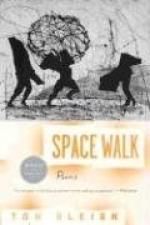|
This section contains 1,655 words (approx. 6 pages at 300 words per page) |

|
A space walk, also known as extravehicular activity (EVA), is an activity or maneuver performed by an astronaut outside a spacecraft. Astronauts perform EVAs for a variety of reasons, including exploration, research, and construction of structures in space. The first space walks of the Soviet Union and the United States in 1965 proved that humans could venture from their spacecraft into space. To judge by the reactions of some astronauts, walking in space was an exhilarating experience. Edward White, the first American space walker, overextended his EVA, and returned to his Gemini spacecraft with great reluctance.
Nevertheless, space is a hostile environment to unprotected astronauts. It lacks oxygen and water. Without Earth's atmosphere to filter the sunlight, temperatures can reach 170°C (338°F), while in shadows the temperature can drop to -120°C (-184°F). Hazardous micrometeoroids and radiation also threaten spacewalkers, and with no atmosphere and therefore...
|
This section contains 1,655 words (approx. 6 pages at 300 words per page) |

|


